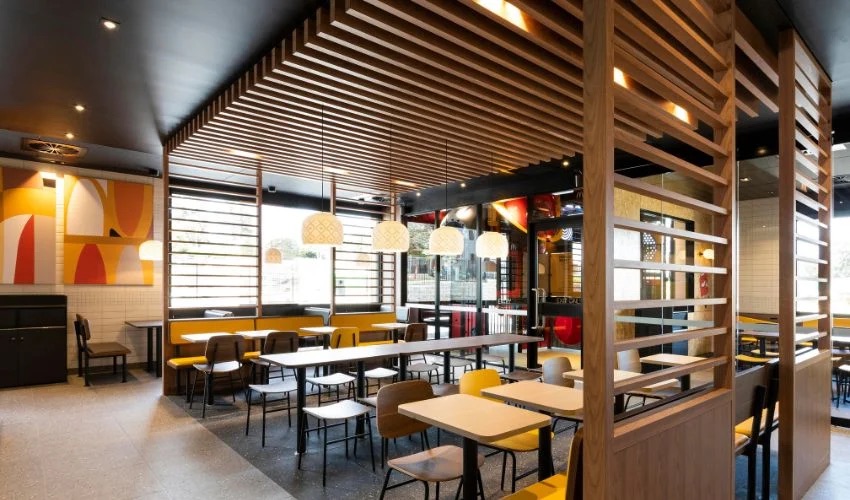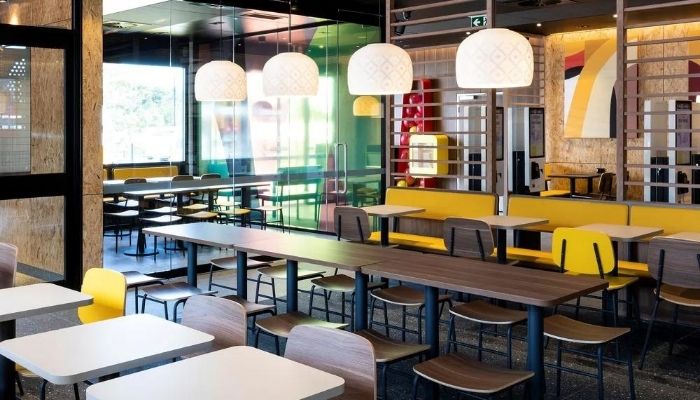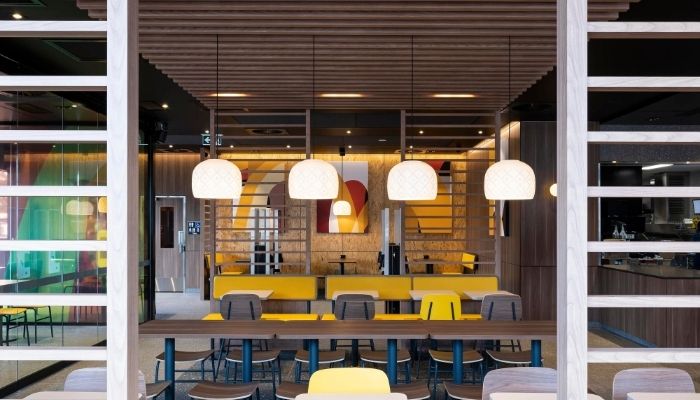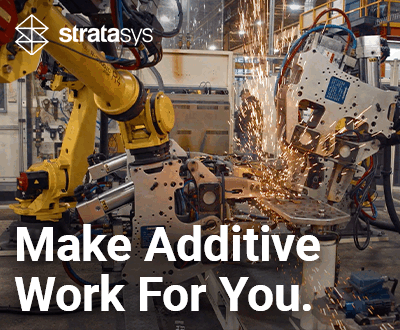McDonald’s Is Turning to 3D Printing in Its Restaurants

It seems that fast-food chain McDonald’s recently turned to 3D printing not to design new hamburgers, but to imagine the lighting fixtures for its restaurants around the world. For this, the multinational turned to Philips and additive manufacturing, after having tried to reproduce the design in head via other production methods, without success. In fact, the American giant already had a design in mind: it wanted a translucent circular luminaire (or lighting fixture) with an embossed relief, giving it a shimmering velvet effect. By turning to 3D printing, McDonald’s was able not only to get as close as possible to its original idea, but also to produce a more sustainable product by choosing recyclable materials.
McDonald’s has ambitious goals when it comes to sustainability. It wants to reduce its carbon footprint by 60% by 2030, and is looking for ways to do so wherever possible. This includes the design and interior decoration of its restaurants. Marc Pochert, Senior Director of Global Design Integration at McDonald’s Corp, explains: “We design for new store modelings and openings across the globe, for all of our 38,000 restaurants. We have a couple of requirements which are not discussable. So there are no off the shelf solutions. We want to own the IP rights and we need a scalable solution within a short lead time. It also needs high durability and we want it all at competitive cost.”

3D-printed luminaires were to have a shimmering effect
Taking these requirements and constraints into account, it was necessary to find a manufacturing solution that was fast, sustainable, inexpensive and flexible. That’s when the American chain met Philips, which offers a co-creation service, notably via 3D printing. And it’s thanks to 3D technology that this spherical model was created. It’s a luminaire with embossments, with different patterns at the top and bottom, making a shimmering, velvet-like appearance. It’s not clear what process was used – perhaps selective laser sintering? But according to McDonald’s, the materials used are more durable.
It took just 3 months to validate the final concept and start production. Another advantage of this collaboration is that Philips can produce the luminaires as close as possible to the restaurants, a considerable benefit when you consider that they are spread over more than 100 countries.

McDonald’s opts for sustainability through 3D printing
Marc Pochert concludes, “It really shimmers like velvet. The pattern is just stunning. The way we cooperated with Philips MyCreation was a great learning for us. Their capabilities. The innovation piece. We were happy to discover them as a perfect partner that can deliver on a global scale. Whenever it comes to new designs, Philips MyCreation will be our first contact to create and develop unique luminaires.” Click HERE to find out more about this collaboration.
What do you think of McDonald’s decision to use 3D printing? Let us know in a comment below or on our LinkedIn, Facebook, and Twitter pages! Don’t forget to sign up for our free weekly newsletter here for the latest 3D printing news straight to your inbox! You can also find all our videos on our YouTube channel.
*All Photo Credits: Philips/McDonald’s






